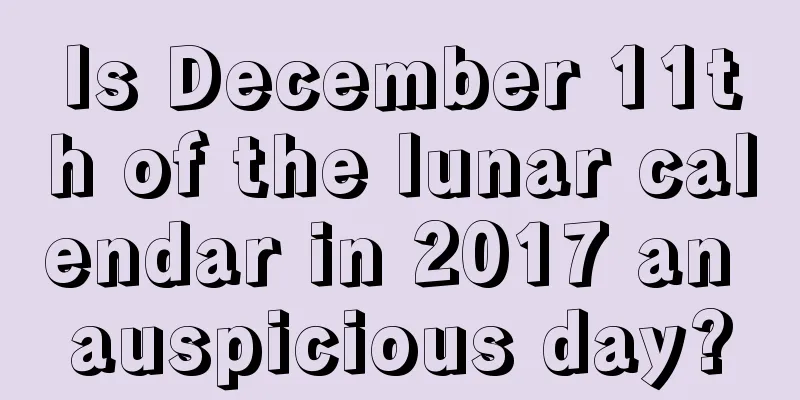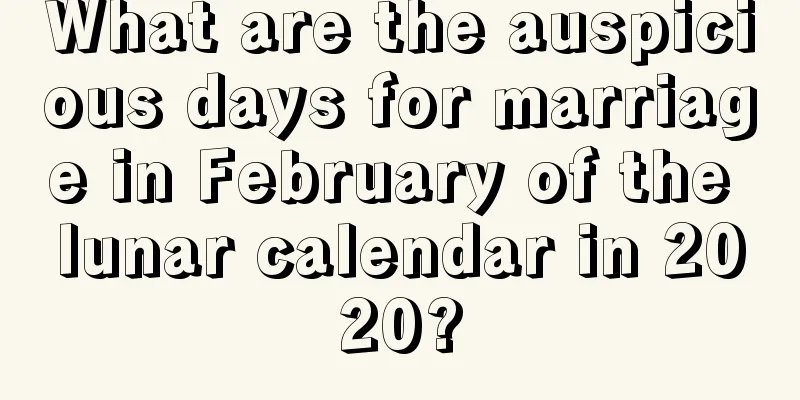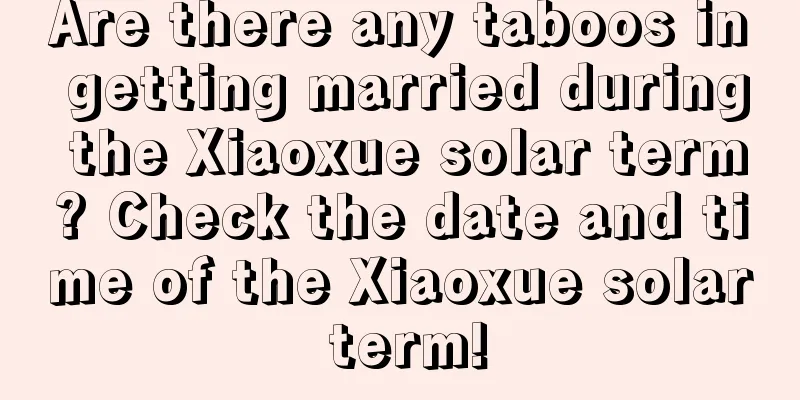When is Chinese Valentine’s Day in 2020? How about the lunar calendar? What does the hexagram look like?

The Chinese Valentine's Day, also known as the Seventh Sisters Festival, Daughters' Day, and Qiqiao Festival, is a traditional Chinese folk festival. As history develops, the beautiful legend of "Cowherd and Weaver Girl" gradually gives the Chinese Valentine's Day the connotation of love. Therefore, the cultural connotation of Qixi Festival is profound. It is not just a simple day of begging for cleverness or Valentine's Day. The folk activities of Qixi Festival are also very rich. So, when is the Chinese Valentine's Day in 2020? How about the lunar calendar? What does the hexagram look like? The seventh month of the lunar calendar belongs to the first month of autumn, and the Beginning of Autumn and End of Heat among the 24 solar terms fall in the seventh month of the lunar calendar. Let’s go to Shuimoxiansheng.com’s special topic on July 2020 in the lunar calendar to learn more about July.When is Chinese Valentine’s Day in 2020? How about the lunar calendar?The seventh day of the seventh month of the lunar year 2020 (lunar calendar)August 25, 2020, Tuesday, Virgo (solar calendar) 【Today’s lunar calendar is suitable】 Marriage, sacrifice, blessing, fasting, groundbreaking, moving, and housewarming [Today’s taboos in the almanac] Opening ceremony ——There are no more than 10 taboos on the 2020 Chinese Valentine's Day, and it is suitable for [marriage], so it is an auspicious day! What does the hexagram look like?The Laohuang calendar's hexagram for today is Fenglei Yi (Yi hexagram). Yi hexagram means loss on the upper and gain on the lower, an excellent hexagram . [Xiang says]: When the time comes, good luck will come. A dead tree that has been blooming for many years is blooming again. Its branches and leaves are reborn with luxuriant growth. Everyone who sees it will praise it. This hexagram is composed of two different hexagrams (lower Zhen and upper Xun) stacked on top of each other. Xun represents wind; Zhen represents thunder. As the wind and thunder surge, their force grows stronger and the thunder becomes louder; the wind and thunder help and grow together and benefit each other. This hexagram is the opposite of the Sun hexagram. It is to harm the upper to benefit the lower, while the latter is to harm the lower to benefit the upper. The second hexagram expounds the principle of gain and loss.[Career]: Invest boldly and have the courage to support other people's careers, and they will surely complement each other. Move forward bravely and act boldly. As long as you are kind, pure and humble, your career will surely grow day by day and your future will be limitless. It is best to help others immediately, respond to emergencies, develop careers, maintain internal unity, follow the people's wishes, establish perseverance, and not be afraid of taking risks. [Doing business]: Don't pursue small profits. Instead, pass on the benefits to customers and you will earn huge profits. Don't be greedy. When you are in danger, you should ask others for advice and seek honest help. [Seeking fame]: If you sincerely help others, you will surely get sincere returns and support, and your career will be successful. 【Going out】: There are benefits to be gained. Go out and act boldly. [Marriage and love]: Don't be too impatient, you will find your perfect match. [Decision-making]: Be open-minded and helpful. Good interpersonal relationships and support from everyone. The most important thing is to establish perseverance and overcome indecision. In particular, we should learn from people who are better than ourselves, use their strength to enrich and develop ourselves. Develop the necessary spirit of adventure. Be kind to others in your daily life. Therefore, even if you encounter danger, you will be rescued by others. The Cultural Implications of the Qixi Festival1. Worship the Seventh Sister: Begging for Skill <br /> The story of Qixi Festival, Vega and Vega weaving originated from the ancient Chinese worship of celestial phenomena. People gave Vega unlimited imagination through astrological observation. The Seventh Sister is based on the star Vega. She is also the patron saint of lovers, women and children. July 7 is her birthday. People worship the Seventh Sister on the night of the seventh day of the seventh month to pray for blessings, make wishes, beg for skills, pray for marriage, and protect the safety of children.The day of begging for cleverness is when women compete with each other in cleverness. The women prepare various exquisite items to pay tribute to the Seventh Sister, and it is also an opportunity to publicly compete in their craftsmanship. The real competitions of ingenuity mainly take the forms of "threading a needle to beg for ingenuity", "the happy spider responding to ingenuity", "threading a needle under the moon", "competing for ingenuity in the orchid night", and "testing ingenuity by throwing a needle". Threading a needle to pray for dexterity is also called "contest of skill", in which women compete in needle threading, and the winner is determined by the speed; "threading a needle facing the moon" increases the difficulty of ordinary begging for dexterity, by threading the needle facing the moon; the spider competition is not a needle-threading competition, but catching a spider and putting it in a box, and opening the box the next morning to check the density of the spider web; the custom of throwing a needle to test skill became popular later, and was popular in the Ming and Qing dynasties. The embroidery needle is placed in a container with a water film formed to see if it can float and form a pattern on the bottom of the container to test intelligence and skill. It can be seen from this that this custom reflects the social standards for evaluating women in ancient China, where men farmed and women wove, and being dexterous and deft was the foundation of a woman's life. Women are responsible for taking care of children, doing housework, and protecting women and children. The Seventh Sisters become the objects of worship and sacrifice for women. Qiqiao is not just about being clever, it also embodies people's yearning for a happy family and a satisfying life. 2. The meeting of the Cowherd and the Weaver Girl: the yearning for a perfect love <br /> In the mid-latitude areas of the northern hemisphere, at nightfall in early autumn every year, especially around the seventh day of the seventh lunar month, the Milky Way is exceptionally bright. From the visual effect on Earth, the Vega in Lyra and Altair in Aquila, which are originally very far apart, seem to be connected by the Milky Way. The ancients loved observing the celestial phenomena, and gradually endowed this phenomenon with rich legends, which later evolved into the story of the Seven Fairies and Dong Yong. In these legends, the Cowherd and the Weaver Girl can only meet once a year, so people regard their difficult love and their undying loyalty to love as an example to yearn for and praise, and pray for happy love and a happy family on Valentine's Day. "When the golden wind and jade dew meet, it is better than countless things in the world" is Qin Guan's romantic description of the Chinese Valentine's Day in his poem "Magpie Bridge". 3. Celestial worship: exploration of nature and understanding of society <br /> The meaning of Qixi Festival and love both come from the ancient people's stargazing and divination. The ancients corresponded heaven and earth by "dividing the stars" in the sky and "dividing the fields" in geographical areas. This formed the complex star system in the sky and the four directions and nine provinces on earth. In the vast star system, "Niu Su" is located on the east coast of the Milky Way. It is composed of 6 stars and looks like a cow with two horns on its head but only three legs. Therefore, the ancients called it "Qianniu". The three "Vega" stars are located in the north of Niu. Among them, "Vega I" is the fifth brightest star in the sky, second only to "Arcturus", so it is often directly called "Vega". The ancients referred to the "Niu Suxing" and "Zhe Nu" as "Cowherd and Weaver Girl". This correspondence between heaven and earth formed a celestial realm with the "Emperor Star" as its center and the "Three Enclosures, Four Symbols and Twenty-Eight Mansions" as its main body, which is a hierarchical and large-scale aerial society. The human world is a society centered on the royal capital, with the four directions and nine provinces as the world view. Looking at it today, these classifications and correspondence methods are not scientific, but they are not completely without merit. Science progresses through step-by-step observation, hypothesis and continuous verification. At the same time, the ancients corresponded heaven and earth in this way, arranged the social order of the human world through observation of the stars, and imagined the hierarchy of the heavens through understanding of human society. These were all people's ways of understanding the society they lived in. Although not scientific, this self-consistent theoretical logic became the criteria and standards for people's behavior. |
>>: Is it a good idea to pick up the car on August 24, 2020 in the lunar calendar? How is this day?
Recommend
What is the date and day of April 12th in the lunar calendar in 2018?
April is the most beautiful month in the world. A...
Is it possible to propose marriage on February 16th of the lunar calendar in 2022? Is it an auspicious day to propose marriage?
Choosing different times to propose marriage has d...
Can funerals be held on the first day of the Lunar New Year in 2020? Taboos on the first day of the Lunar New Year
Can funerals be held on the first day of the Lunar...
Is it a good time to travel far away on the 24th day of the third lunar month (April 16th) in 2020?
Introduction: It is generally necessary to choose ...
Which day is the Frost Descent solar term? What is its significance among the people?
Each of the 24 solar terms represents different me...
What is the zodiac sign of people born on December 27, 2017? What are the two dual personalities of Aquarius?
Personality is a person's own attribute that c...
Can I get married on the beginning of spring? Can I get married on the beginning of spring in 2019?
"Lichun" is one of the 24 solar terms. E...
Is there a limit on WeChat red envelopes for the Chinese Valentine’s Day in 2021? Will the amount of WeChat red envelopes be increased during the Chinese Valentine’s Day?
The Qixi Festival is the festival for praying for ...
What date is September 21st in the lunar calendar 2017? What day is it?
We have quietly stepped into a season full of har...
A list of auspicious and inauspicious times and taboos for the seventh day of the twelfth lunar month in 2020
La means connection, the transition between the n...
Is it appropriate to sign a contract on September 27th of the lunar calendar in 2017?
In life, it is inevitable that you will encounter ...
Why is the celebration of Minor New Year divided into north and south? What is the origin of Minor New Year?
Introduction: Xiaonian is an important festival in...
Why are people born on the Ghost Festival considered special? Good and bad sayings about people born on Ghost Festival
Many people are born in this world every day, so m...
Is the 20th day of the sixth lunar month in 2020 a good date? Can I pick up the car?
June is a hot month and the lotus flowers are in ...
Is it auspicious for a boy to be born on the fifth day of the tenth lunar month in 2021? What is the best time to be born?
Every parent hopes that their child will be born a...









